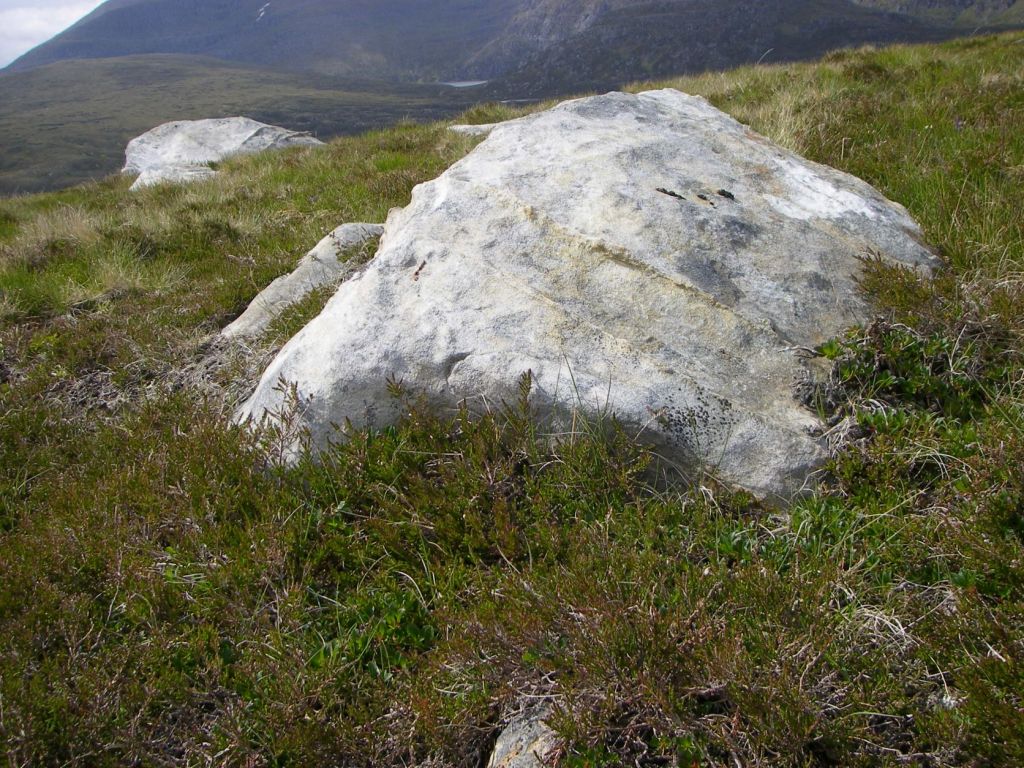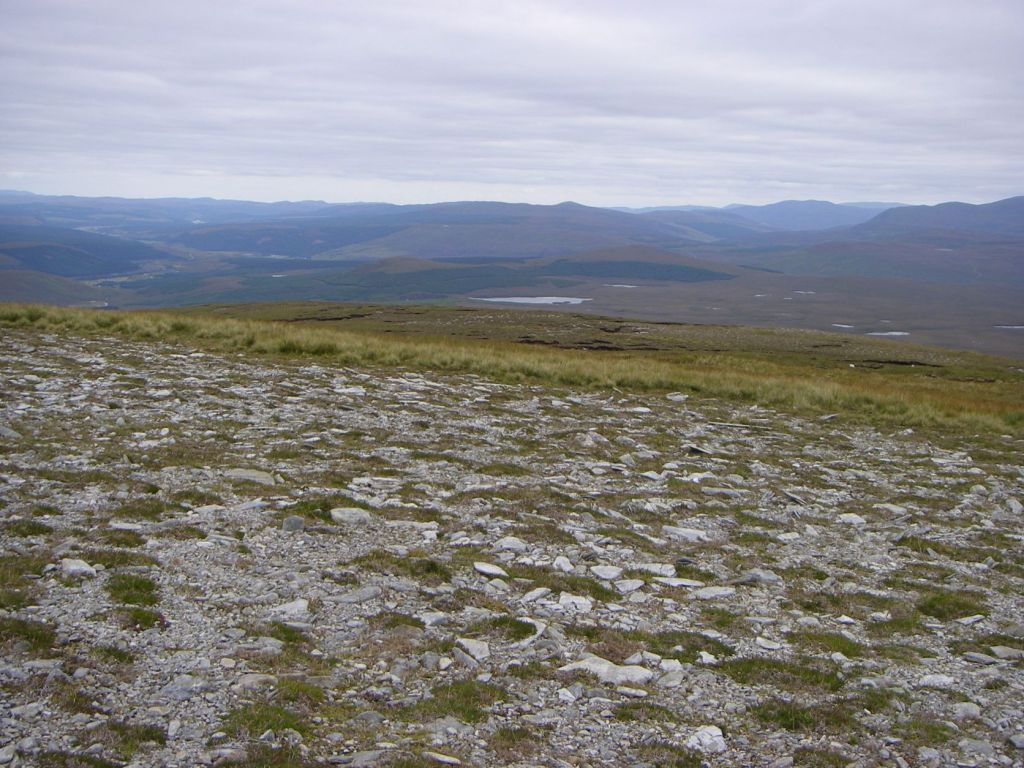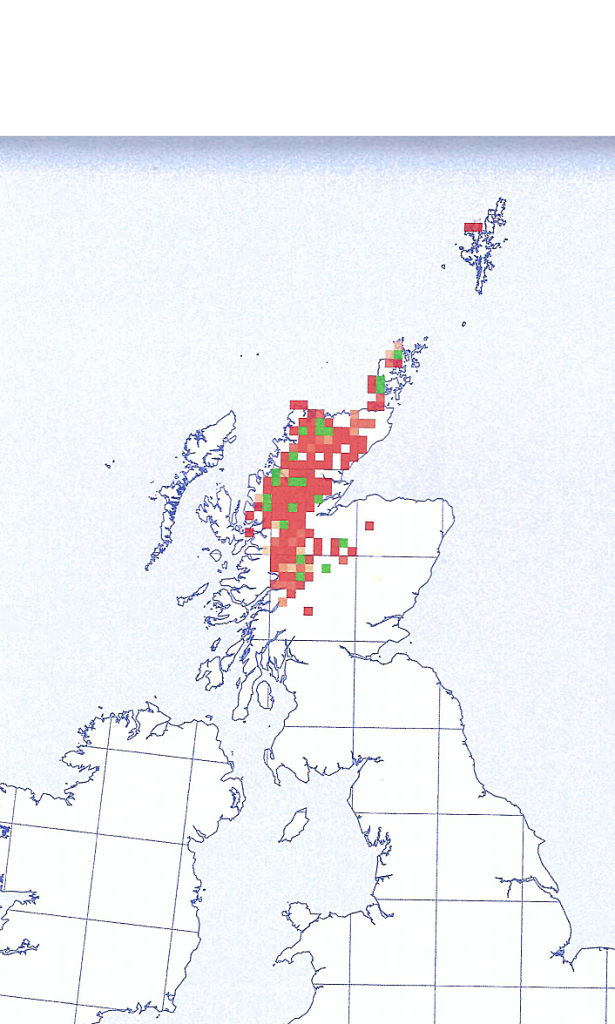
The Arctic or Mountain Bearberry is a northern Scottish mountain species. It is a member of the Ericaceae, a family which includes the heaths and rhododendrons. It is one of two British Arctostaphylos species, the other being the commoner Bearberry (Arctostaphylos uva-ursi).
Arctic Bearberry is a small prostrate shrub which grows in low mats with straggling stems. The alternate leaves are toothed and dark green, with a network of veins and a wrinkled appearance. In autumn the leaves turn a rich red, often a striking sight on the hill later in the year.

The white flowers are in terminal clusters and tubular in shape (see below). Flowers appear in May and June, perhaps often being self-pollinated. It fruits sparingly and the black berries may be seen in the autumn. The berries were reputedly enjoyed by bears when they were present in Scotland, although they are now probably mainly on the menu of birds.

The commoner related Bearberry (Arctostaphylos uva-ursi) often grows at lower altitudes and has evergreen leaves which are less wrinkled. It has red berries.
Most sites of Arctic bearberry are to be seen at intermediate altitudes, of around 500 or 600 metres, frequently in exposed sites and often on stony ground with lichens and mosses. It is also to be found in low-growing montane heath, often with Heather (Calluna vulgaris), Crowberry (Empetrum nigrum) and other typical species. Some sites are also located in blanket bogs. On the north coast of Scotland, it may approach sea level.
Arctostaphylos alpinus was first described in Northern Scotland by James Robertson in 1767 and many further records have since been made.

It has a circumpolar distribution, being found in Northern Europe, the Eurasian area and North America, mainly in northern latitudes. This species has also been noted further south in the Alps and Pyrenees. In the UK has a strikingly northern distribution, being mainly confined to the northern Scottish Mountains. It is really quite rare in Southern Scotland and is not to be seen in England.

Arctic bearberry has been classified as nationally scarce, but the discovery of new sites has made this borderline. These new sites are probably ones that have always been present, but have only been found in recent years. On the other hand, there appears to be no clear evidence of decline, although heather burning may be a hazard.
My main experience of this species has been mainly in Easter Ross where it has been recorded in many places. Since 2000 383 records have been made for this species in this Vice-county. In Easter Ross it has been found in 28 10km squares since 2000 and 4 of these appear to be new 10km records. It is possible this may have contributed to its present borderline rarity status and yet more sites probably await discovery.
Arctic Bearberry is a plant to be treasured, especially for its autumn leaves. When you come across it during an ascent you feel you are making good progress up the hill.

References
Lusby P., Wright J. and Clark S. (1996) “Scottish Wild Plants” HMSO Edinburgh
Scott M. (2016) “Mountain Flowers” Bloomsbury, London.
Stewart A., Pearman D.A. and Preston C. D. (1994) “Scarce Plants in Britain” JNCC Peterborough.
©Brian Ballinger